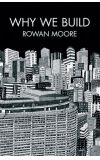
09 Jan 2013 13:16:17
Why are architects so mercurial? Why is architect-speak so impenetrable? Rowan Moore, the Observer's architecture critic, answers question one and could not be accused of accusation number two. One of the UK's most accomplished writers on the profession, he critiques the most important buildings and the people who masterminded them with a style that is both entertaining and cuts through the crap. Why We Build, his new book, does not disappoint. It does not set out to be a definitive study, more a set of musings. As he tours the world, Moore dips into themes. He guides us through the relationship between architecture and eroticism, power and finance in a journey from São Paulo to New York, Beijing and beyond.
The more eccentric the destination, the more amusing is the language. The Atlantis hotel in the ridiculous bling fest of Dubai is "a Blofeltian phantasmagoria of giant aquaria and rooms with views of sharks, which suffered the rare ignominy of being accused of bad taste by the British tabloid the Sun". He stops off at the super-rich folly of self-made software mogul Larry Dean in Atlanta, Georgia – a mansion the colour of salmon mousse. The marital bed is "engulfed by writhing turquoise vegetables … and by gooey blossomings the colour of vulvas".
Architecture is perhaps the ultimate form of human self-expression. A less charitable term would be self-indulgence. Sex plays a major part in this narrative, from a farmhouse in Sussex designed for swingers, to the compulsiveness of American architect Stanford White, a "man with fire between his legs and lead between his eyes". Frank Lloyd Wright apparently built his career "servicing the wives of rich men while designing their houses".
From the late 1960s housing estate outside Amsterdam called Bijlmermeer, the author takes us to Moscow, to the Park of National Economic Achievements and the marbled metro stations. These testaments to Stalin personified "force with charm, the twinkling eyes with the mailed fist".
He describes Kijong-dong, a prosperous-looking North Korean town in sight of its enemy to the south, "which turns out to have no glass in its windows nor rooms behind its doors". Architecture as tool of propaganda is a long-established motif, but instead of the bombast, Moore chooses to focus on the relationship with power, not from the perspective of client, but of architect. Thus in his view Mies van der Rohe "lingered longer in Nazi Germany than was decent, apparently in the hope that the regime might adopt his architectural style". He also tries to explain the thinking of Rem Koolhas when he agreed to build a new HQ for Chinese state television.
Moore has conjured a rare feat in producing a work that will be appreciated by professionals and punters alike. My only quibble was the use of small, dusky black-and-white photographs and illustrations. I would have preferred more boldness and colour.
His overarching message is that buildings are inextricably linked to time and space. They are defined by their context. I agree with this assertion, with a little personal experience. As chair of Turner Contemporary, I watched as David Chipperfield created a gallery by the sea in Margate that has taken the UK art world by storm. Chipperfield is doggedly proud of his achievement; he is also self-deprecating. His "shed", as he calls it, has transformed not just the built environment but the mood in a town that has seen so little success in recent times.

